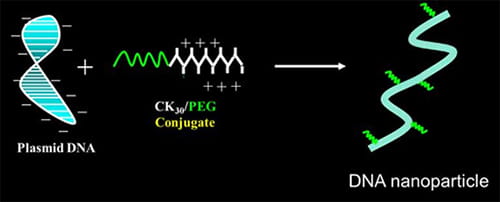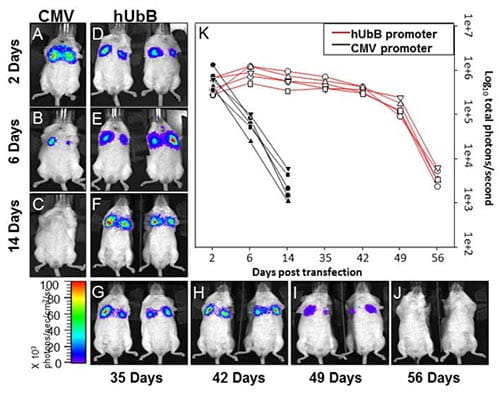Development and understanding of nucleic acid nanoparticles for human gene therapy
Postdoctoral Position AvailableThe Ziady Lab has a position available in a postdoctoral fellowship on the development and understanding of nucleic acid nanoparticles for human gene therapy. Learn more about this position and the required qualifications. |
Gene therapy and/or repair remains a viable and attractive option for a large number of childhood diseases, both inherited and acquired. We not only tackle the correction of the primary defect in CF, dysfunctional cystic fibrosis transmembrane conductance regulator (CFTR), with our gene delivery program, but we also address the correction of secondary defects such as susceptibility to infection and exaggerated inflammatory responses. Many of these secondary defects are present in other disease of the lung, liver, and brain, and thus, our studies have also extended beyond just targeting the CF lung.
In our laboratory, we use nanotechnology to deliver genes and/or other nucleic acids to target cells in the lung, liver, eye, or brain to effect therapeutic gene expression or repair mutated genes. These organs are targets for a variety of diseases including cystic fibrosis (lung and liver), hemophilia (liver), macular degeneration (eye), and Parkinson's Disease (brain). Our nucleic acid nanoparticles (NNP) are complexes of DNA or RNA with carrier proteins that are 100-200 nanometers in size (Figure 1). These particles can enter the cell and deliver genes for expression in the nucleus or RNA to the cytoplasm, and can be used to affect gene therapy or repair on target cells, depending on disease indication (Figure 2).
The goal of our current studies is to examine the safety, efficacy, immunogenicity, and the cellular biology of various formulations of NNPs. Although NNPs have been tested and found to be safe and efficacious in humans, gene delivery is low.
 |
Figure 1. Schematic of PEG-PolyK DNA nanoparticle design. |
 |
Figure 2. Assessment of impact of promotor on DNA nanoparticle mediated gene expression. Wild type C57BL/6 mice received 100 µg of compacted pCMVluc or pUbBluc by tracheal administration and gene expression was monitored by BLI (n = 5 for each group). Imaging of mice dosed with pCMVluc was conducted at days 2 (A), 6 (B), and 14 (C). For mice that received pUbBluc, imaging was conducted on days 2 (D), 6 (E), 14 (F), 35 (G), 42 (H), 49 (I), and 56 (J). Panel (K) demonstrates total emitted photons/s for each mouse throughout the experimental time course. |



